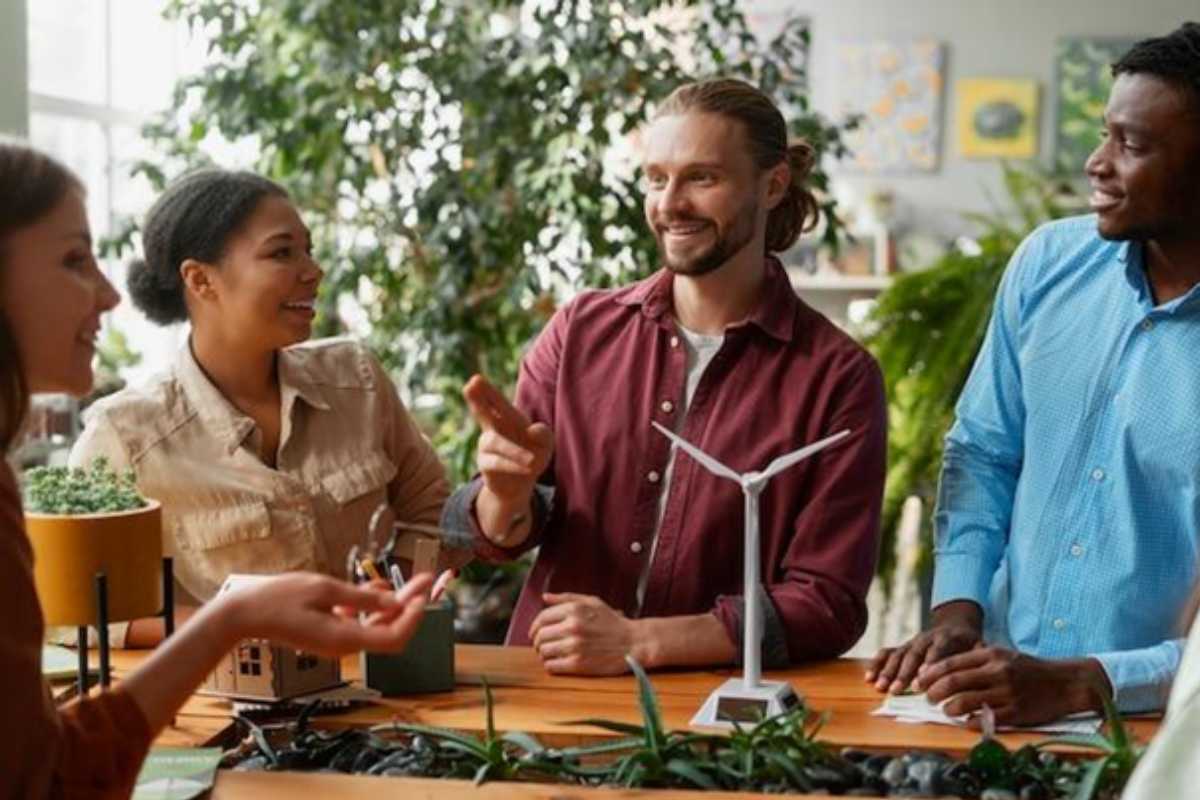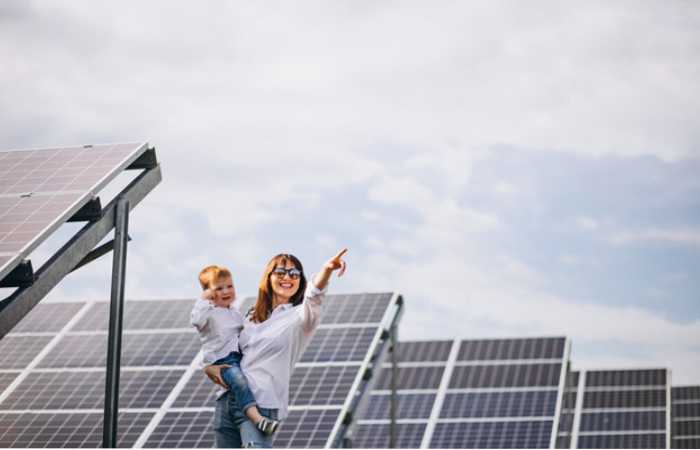
Green Shoots in Oil Country
The UAE Energy Strategy 2050 and Green Agenda 2030 are driving a significant transition in the Middle East. Green shoots of innovation are emerging from the oil-rich desert landscape. A region once dominated by oil rigs is now developing initiatives focused on eco-innovation. There’s a certain irony that an area known for its vast oil reserves is working to transform into a centre of sustainable development.
That very tension between an oil-fuelled past and renewable ambitions soon set the stage for bold new policies.
Environmental reforms across the Middle East are progressing faster than many expected. We’re seeing a convergence of technological advancements, regulatory changes, and ecological projects that reshape the region’s identity. This goes beyond simple policy adjustments to fundamentally change how industries and cities operate.
The Middle East is building foundations for a sustainable future through industrial safety improvements, urban renewal projects, and renewable energy development – a direction that wasn’t widely anticipated ten years ago. This shift stands in contrast to the region’s long-established relationship with fossil fuels.
Policy Revolution
Oil has fuelled the Middle Eastern economy for decades, bringing wealth but also environmental problems. The heavy reliance on fossil fuels has created serious ecological issues – pollution and greenhouse gas emissions chief among them.
Now, ambitious government policies like the UAE Energy Strategy 2050 and Green Agenda 2030 are kickstarting a new chapter. From the start of 2025, industries have been required to report greenhouse gas emissions, forcing a rapid embrace of sustainable practices. By making businesses track and report emissions, these strategies boost operational efficiency and attract investment through better ESG reporting. The ripple effects are already reshaping expectations across every sector.
What’s clever about these policies is how they create a practical imperative for innovation. They set clear targets that push industries and cities to reinvent themselves. The mandatory reporting establishes a framework that doesn’t just encourage but necessitates advanced monitoring and reduction strategies. This transparency drives targeted improvements while maintaining the economic growth that’s vital to the region.
Such a rebalancing of priorities not only redefines environmental accountability but quietly paves the way for practical safety innovations.
And it’s this balance – sustaining prosperity while pivoting to environmental responsibility – that’s now fostering unprecedented industrial innovation.
Rethinking Fire Safety
For years, fire safety has relied on PFAS-based firefighting foam despite the serious health and environmental risks posed by these ‘forever chemicals.’ These substances persist in ecosystems and human bodies long after application – an unwelcome toxin that simply refuses to disappear.
Frontline Innovations has created a practical shift in fire safety development with FireBull, a certified fluorine-free fire foam. The company works with Enforcer One on sustainable firefighting solutions across the Middle East. FireBull has achieved important certifications, becoming the first fluorine-free foam certified by the Emirates Safety Laboratory (Certificate #001) while also securing Underwriters Laboratories certification. These endorsements verify the product meets both regional and international safety standards while effectively suppressing fires without harmful chemicals.
You can fight fire without fighting the environment too. By developing fluorine-free technology for firefighting foam, Frontline Innovations demonstrates that even the most safety-critical sectors can adopt sustainable practices. This change mirrors wider industry movements toward eco-conscious approaches, showing we needn’t choose between safety and environmental protection.
As these safety measures take hold, a similar spirit of reinvention begins to shape our cities.
The shift away from PFAS isn’t just about complying with new regulations – it’s part of a broader realisation in industries that once viewed hazardous materials as an unavoidable operational cost. As industrial practices evolve, the very fabric of urban environments is similarly transforming to embrace sustainability.
Smart Sustainable Cityscapes
Urban development across the Middle East is shedding its traditional skin and embracing modern, sustainable design principles. We’re watching cities transform from resource-hungry sprawls into environmentally conscious urban centres.
Bee’ah’s headquarters in Sharjah stands as a striking example of this shift. Designed by Zaha Hadid Architects, the building resembles something from a science fiction film where humanity has found balance with the natural world. It’s achieved LEED Platinum certification and runs entirely on renewable energy. The structure doesn’t just cut energy use – it makes a visual statement about sustainable architecture’s potential. Bee’ah works with Microsoft and Johnson Controls on AI integration that allows the building to anticipate needs and optimise operations.
Beyond its headquarters, Bee’ah contributes to sustainable infrastructure through the Sharjah Waste-to-Energy plant. This facility processes 500,000 tonnes of waste and generates 30 megawatts of low carbon energy annually, integrating sustainable practices into essential municipal systems.
These aren’t isolated projects but part of a coordinated effort to reimagine cities. They align with regulatory frameworks that now prioritise sustainability in urban planning, establishing benchmarks for future development.
Even as urban landscapes reinvent themselves, the underlying energy systems are undergoing an equally profound shift.
Renewable Energy and Economic Diversification
The Middle East’s energy sector is evolving beyond fossil fuels through ambitious renewable projects. This pivot isn’t just good for the environment – it’s economically essential for the region’s future.
Masdar works on this transformation with projects like Masdar City, a zero-carbon urban development that combines vision with practical challenges. Building such initiatives is complex but potentially transformative. With projects across more than 40 countries and capacity exceeding 51 GW, Masdar applies practical innovation to regional energy transition. The collaboration between Mubadala, ADNOC, and TAQA supports these initiatives, as Masdar focuses on renewable energy development.
Look beyond energy production and you’ll find diversification happening across multiple sectors. The UAE’s sustainable tourism market shows this broader shift, with projections pointing to growth reaching USD 225.7 million by 2035. This emerging market creates new economic opportunities while complementing renewable energy initiatives by attracting eco-conscious travellers.
This cross-sector approach to economic diversification builds crucial resilience. It works alongside policy reforms to create a sustainable future that gradually reduces the region’s historical dependence on oil revenues.
But there’s more to it than just energy and economic transformation – they must go hand-in-hand with restoring the natural systems that ultimately support all human activity.
Restoring Nature’s Balance
While technology and industry push forward, ecological restoration works quietly in the background, providing the natural foundation everything else relies on. Nature-based solutions aren’t just nice additions to sustainability goals – they’re absolutely essential.
Look at what’s happening across the region. Mangrove reforestation and wetland rehabilitation are tackling urgent problems like water scarcity and climate vulnerability head-on. The results are clear: coastal reforestation has brought back thousands of square metres of native mangrove ecosystems, and wetland projects have reclaimed vast areas of previously degraded land. These aren’t simply attractive green spaces. They deliver concrete improvements in carbon capture and biodiversity, offering vital services to nearby communities.
Let’s be clear. These restoration efforts aren’t optional extras on the sustainability agenda. They form the environmental foundation that supports long-term resilience alongside the more visible urban and industrial innovations.
These rejuvenation efforts form an indispensable complement to the region’s broader drive for sustainable change.
You can’t build a sustainable society on damaged natural systems. Without this ecological renewal, all other green initiatives would ultimately collapse. These ecological projects connect to a larger integrated approach to regional transformation.
Integrating Policy, Technology, and Economic Trends
The threads we’ve explored don’t exist in isolation. They connect through government policies, industrial innovations, and urban projects that are collectively reshaping the region.
Regulatory mandates, tech breakthroughs, and strategic investments create a feedback loop for sustainable development across the Middle East. Each element reinforces the others.
Look at how Frontline Innovations’ move to fluorine-free foam, Bee’ah’s smart urban designs, and Masdar’s renewable energy projects complement each other. None stands alone. Together, they’re redefining the regional landscape by creating connections that boost overall sustainability impact.
This interplay shows the practical integration of regulations, technology, and investment, building a solid foundation for sustainable growth in the region.
What we’re seeing isn’t just small, incremental change. It’s a complete rethinking of what the Middle East could become.
A Green Future for Oil Country
The dynamic interplay between policy, industrial innovation, urban design, renewable energy, and ecological restoration is fundamentally transforming a region once defined solely by its oil reserves.
We’ve seen how Frontline Innovations develops fluorine-free fire foam that protects both people and planet, how Bee’ah creates urban spaces that seem to defy conventional resource limitations, and how Masdar leads the development of renewable solutions that reshape energy expectations. Each demonstrates how the Middle East is actively rewriting its story.
Those green shoots we pictured at the beginning? They’re not just metaphorical anymore. Real innovation is sprouting from terrain once stained by oil extraction, bringing tangible hope and renewal to landscapes historically dominated by fossil fuel infrastructure.
The irony that began our exploration now reveals a profound truth: sometimes the most promising gardens grow in the most unexpected places. The region that powered the carbon economy may well become the laboratory that helps us move beyond it – proving that even in oil country, the future can be refreshingly, defiantly green.